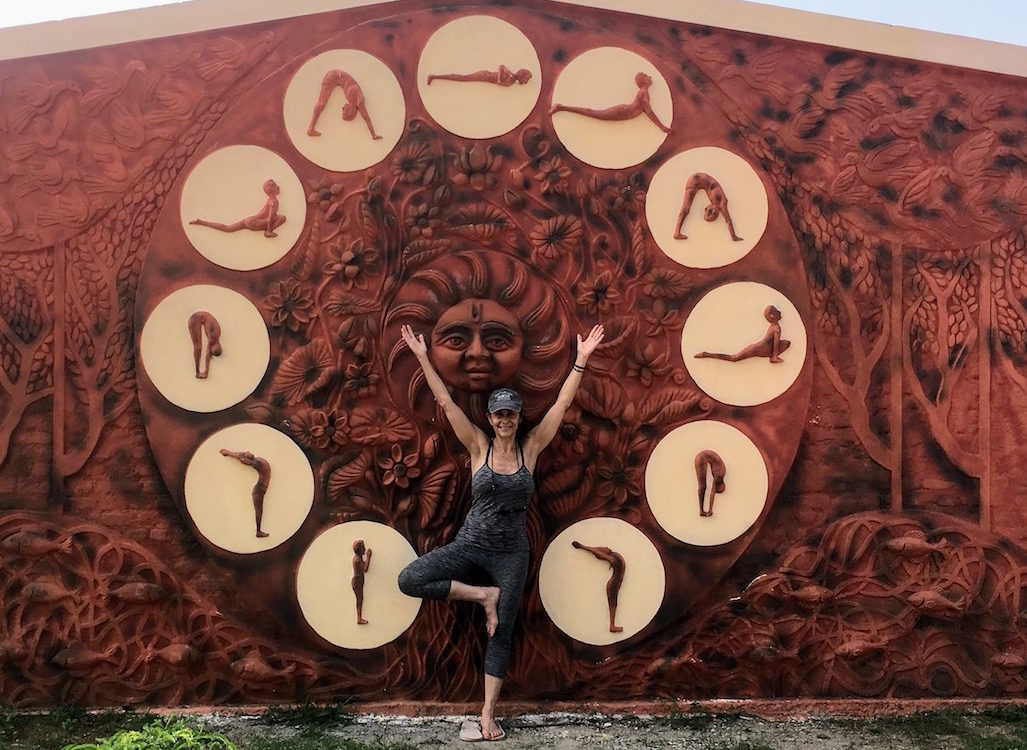I’ve been back in New York for three weeks now, and have yet to document my recent trip to southern India to attend a 200-hour yoga teacher training (YTT). This is probably because I am still trying to characterize and make sense of it. Now, mulling it over, I ask myself, was this a fun trip? No! Was it a good experience? Perhaps. Was it transformative? Somewhat.
When I first arrive, thoughts of “WHAT was I thinking?” keep echoing. One week in, still trying to adjust to the time change and a grueling 6-days-per-week schedule that begins daily at 6 a.m., I write a note to myself: “This has not been easy. Can I last another three weeks?” My doubts are dispelled by encouraging messages from friends and family. “I’m so proud of you”. “You can do it”. “It’s going to be amazing”. My pride and fear of failure keep me going.
After traveling 22 hours from JFK (including a change of planes in Dubai and a 1-1/2 hour taxi trip from TRV), I arrive at Suddha Anand Yogshala at nearly 6 a.m. on November 14, one day before the program officially begins. I have slept “maybe” six hours over the past 24. I am greeted by Yusef, the ashram manager, and I appear to be the only participant who has checked in. I briefly canvas my surroundings.
The ashram is a gated “compound”, with a front courtyard leading into the main guest quarters. There’s a sign posted outside the front door that advises “Leave your ego outside”. The interior courtyard is filled by a communal dining table, which is more of a large picnic table with bench seating. The note on the table reads, “Please refrain from eating eggs, onions, garlic and meat for the remaining time here. Also, no alcohol, drugs or smoking.”
Six guest rooms are accessible from this main floor. Mine is immediately to the right of the entrance, which means I have full view of the highly trafficked area and can hear EVERYTHING. My room is more like a “cell”, larger than expected yet minimally furnished: two twin mattresses seemingly made of straw, atop a wooden board, framed too short by wooden rails; two “pillows” that are more like lead lumps; low quality, non-matching sheets and pillow shams (no blanket); a desk with a mirror and an uncomfortable, cushionless wicker chair; a wicker shelf; a waste basket; and a metal clothing rack to dry hand-washed laundry (no other laundry facilities are available). The ultraviolet lighting in the room is harsh, but there are two fixtures and one is less offensive and can be controlled by the bed. The ceiling fan is the only respite from the hot, sticky climate, save two windows. The window that faces the interior courtyard is curtained and reinforced by clothespins to shield my privacy. There is another window in the back, facing the exterior “garden” and surrounding the complex wall. Both windows are covered with screens, and can be opened to alleviate the musty smell which never dissipates.
The bathroom is blue. It is large but basic, consisting only of a toilet, a tiny sink, and a shower head and faucet in the center of the room. There is no toilet paper, no soap, no towels, and, to my chagrin, NO HOT WATER. A large bucket and measuring cup (for laundry, I later deduce) are the only “amenities” to be found. A small window above the sink provides a makeshift shelf for toiletries.
Six more similarly furnished rooms are on the second floor, connected by a catwalk overlooking the dining area, and I am thankful that I have elected a private room. The third floor is an open space draped in mosquito netting desperately in need of repair, with only a tin roof over it to protect from the elements. Here we will practice pranayama, yoga, and meditation. This will also be our “classroom” for anatomy, philosophy and teaching methodology.
And so begins my journey to mindfulness, meditation and detox.

